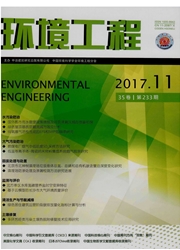

 中文摘要:
中文摘要:
将沉积物中重金属浓度以区间形式表示,建立了基于区间数的沉积物重金属生态风险分析模型。考虑到区间数的可比性较小,引入了区间数排序法,利用区间排序法对评价得到的风险结果进行比较,建立了基于区间排序法的湖泊沉积物重金属生态风险分析模型,并与区间隶属度方法的评价结果进行对比。将该模型应用于洞庭湖沉积物中重金属潜在生态风险分析中。评价结果显示:4个采样点的生态风险顺序分别是樟树港〉东洞庭湖〉城陵矶〉鹿角。基于区间数排序法的评价能够更加直观地表示出各采样点风险的排序,避免了隶属度方法中主观因素的影响,能够为风险管理提供更加准确的信息。
 英文摘要:
英文摘要:
The model for ecological risk assessment of heavy metals in sediments was established, in which the concentrations of heavy metals was expressed as interval numbers. Considering it is difficult to compare the interval numbers, the ranking- method of interval numbers was introduced. And then the model of ecological risk assessment for heavy metals in sediments based on ranking-method of intervals numbers was built. This model was applied to the risk assessment of the sediments of Dongting Lake. The results showed that the order of the risk for the four sampling sites was Zhangshugang 〉 East Dongting Lake 〉 Chenglingji 〉 Lujiao. The model established in this study could rank the risk of every sampling sites more visualized, and also could avoid the influence of subjective factors in the membership method. The method could provide the accurate information for the risk management.
 同期刊论文项目
同期刊论文项目
 同项目期刊论文
同项目期刊论文
 Graphene-based materials: Fabrication, characterization and application for the decontamination of w
Graphene-based materials: Fabrication, characterization and application for the decontamination of w Ecological risk assessment of heavy metals in sediments of Xiawan Port based on modified potential e
Ecological risk assessment of heavy metals in sediments of Xiawan Port based on modified potential e Spatial risk assessment and sources identification of heavy metals in surface sediments from the Don
Spatial risk assessment and sources identification of heavy metals in surface sediments from the Don 期刊信息
期刊信息
